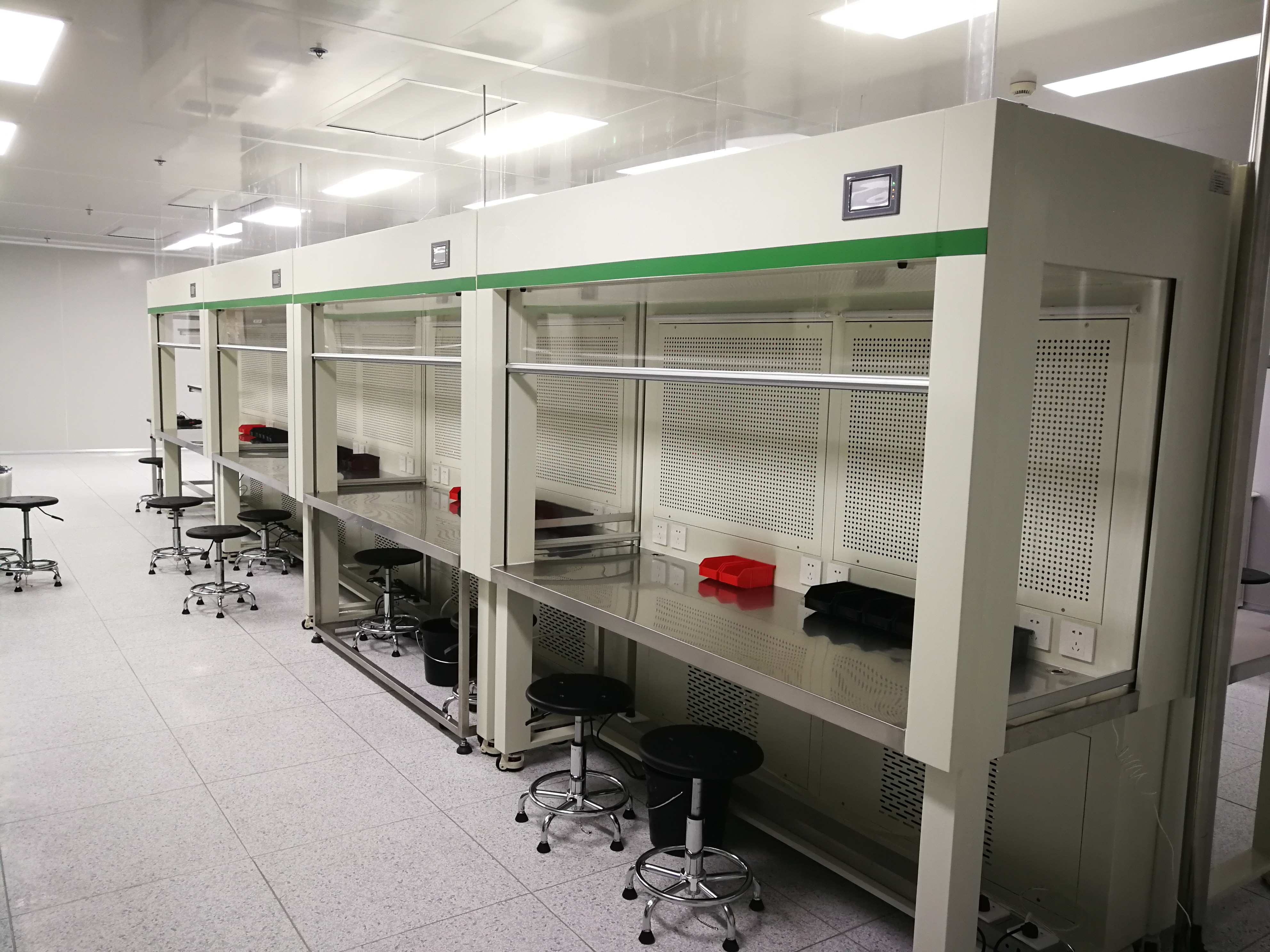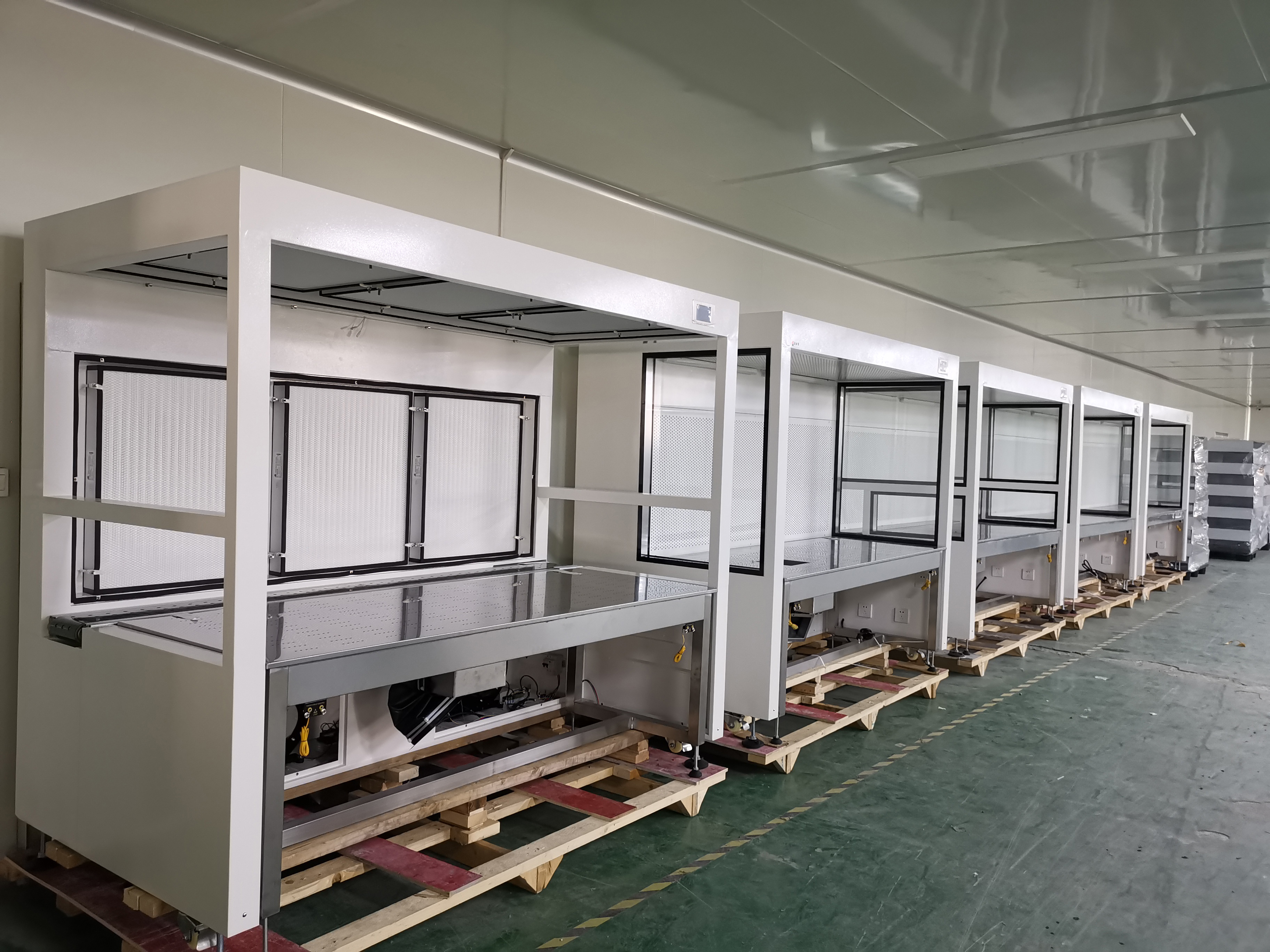Understanding laminar flow is crucial to choose the correct clean bench for the workplace and application.


Airflow Visualisation
The design of clean benches has not changed much in the last 40 years. The options are many and the reason and rational for which hood is best for your application will vary on what your processes are, the equipment used in the process, and the size of the facility you are placing them in.
Laminar flow is the verbiage used to describe air movements that are even in velocity, creating a unidirectional flow/velocity moving in one direction with no eddy currents or reflux in the work zone. For down flow units, a directional flow visualisation smoke test can be employed to show less than 14 degrees offset from top to bottom (work zone area).
The IS0-14644.1 standard calls for a classification of ISO 5 – or Class 100 in the old Federal Standard 209E to which most people still refer to. Please be aware that laminar flow has now been replaced with the words “unidirectional flow” for the ISO-14644 documents now being written. The placement of clean bench in cleanroom needs to be analysed and chosen very carefully. Ceiling HEPA filters, supply grills, and movement of people and products all need to be part of the equation of hood type, size and positioning.
The types of hoods vary as to direction of flow, console, bench top, table top, with casters, without casters, etc. I will address some of the options as well as the perceived pros and cons of each, with the aim to help customers making educated decisions on which will be best for each individual case. There is no one-size-fits-all in these applications, as they all vary.
Console Model Clean Bench
·Remove air from below the work surface effectively sweeping the floor of particles generated moving through the cleanroom;
·Motor is located below the work surface making it easier to access;
·Can be vertical or horizontal in some instances;
·Difficult to clean underneath the bottom;
·Placing casters on the bottom raises the hood, however cleaning casters is nearly impossible;
·Sterile technique is very critical since the IV bag is located between the HEPA filter and work surface and the first air is compromised.
Table Top Clean Bench
·Easy to clean;
·Open underneath to allow for carts, trash or other storage to be used;
·Come in horizontal & vertical flow units;
·Come with bottom intakes/fans on some units;
·Come with casters, which are hard to clean;
·Fan intakes on top cause room filtration circumvention, pulls air toward the ceiling lifting and suspending particles generated by personal movement in the cleanroom.
Clean Zones: ISO 5
These options are, effectively, clean benches built into the walls/ceilings of the cleanroom being part of the cleanroom design. These are usually done with little consideration and forethought in most cases. They have not been tested and verified for repeatability in testing and monitoring, as all manufactured hood are, thus the FDA treats them with great skepticism. I agree with them on their opinions as the ones I have seen and tested do not function as the designer thought they would. I would recommend trying this only if certain things are present, including:
1. Airflow monitor to prove velocities;
2. Leak testing ports are in place;
3. No lights are present inside the hood;
4. No framing is used on directional flow shield/sash;
5. Particle counters are movable & used near the point of criticality;
6. A robust testing procedure is designed & performed repeatedly with video taping;
7. Have a removable perforated screed below the Fan power HEPA unit to produce better unidirectional flow;
8. Use a stainless-steel work surface pulled off the back wall to allow flow to keep the rear/sides of the table & wall clean. Must be movable.
As you see, it requires much more thought than a pre-manufactured hood does. Make sure the design team has built a facility with an ISO 5 clean zone in the past that has met the FDA guidelines. The next thing we should address is where to locate the clean benches in the cleanroom? The answer is simple: do not locate them under any ceiling HEPA filter and do not locate them near doorways.
From a contamination control point of view, clean benches should be located away from walkways or movement routes. And, these should not be placed against walls or cover return air grills with them. The advice is to allow room on the sides, back, bottom and top of hoods so they can easily be cleaned. A word of warning: If you cannot clean it, do not put it in a cleanroom. Importantly, do place them in a way to allow for testing and access by technicians.
There are discussions as to, can they be placed across from each other? Perpendicular to each other? Back to back? What is best? Well, it depends on the type, i.e. vertical or horizontal. There has been extensive testing on both of these types of hoods, and opinions differ on which one is better suited for different applications. I will not solve this discussion with this article, however I will give my opinions on some of the thought processes out there on the two designs.
Post time: Apr-14-2023

